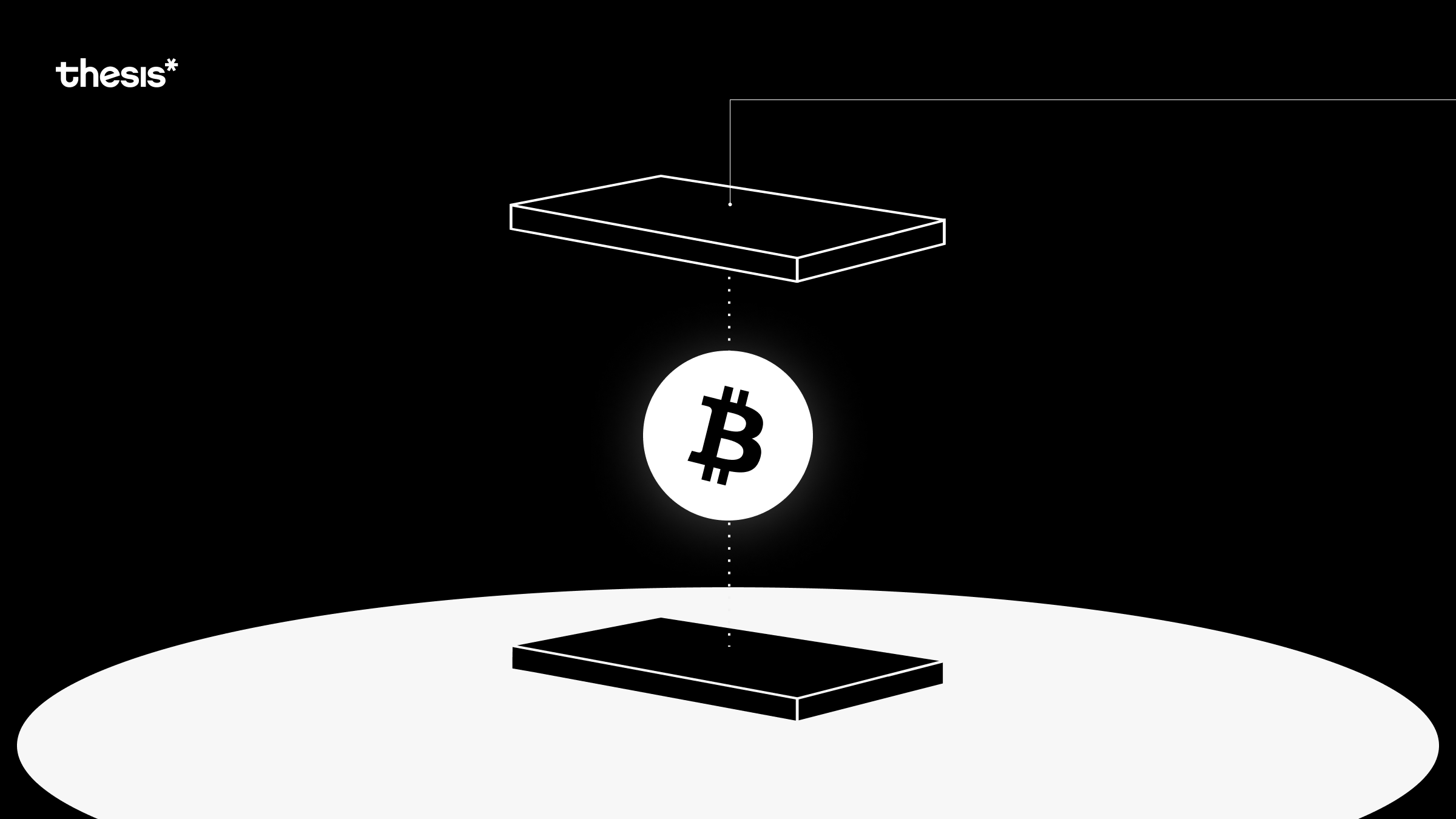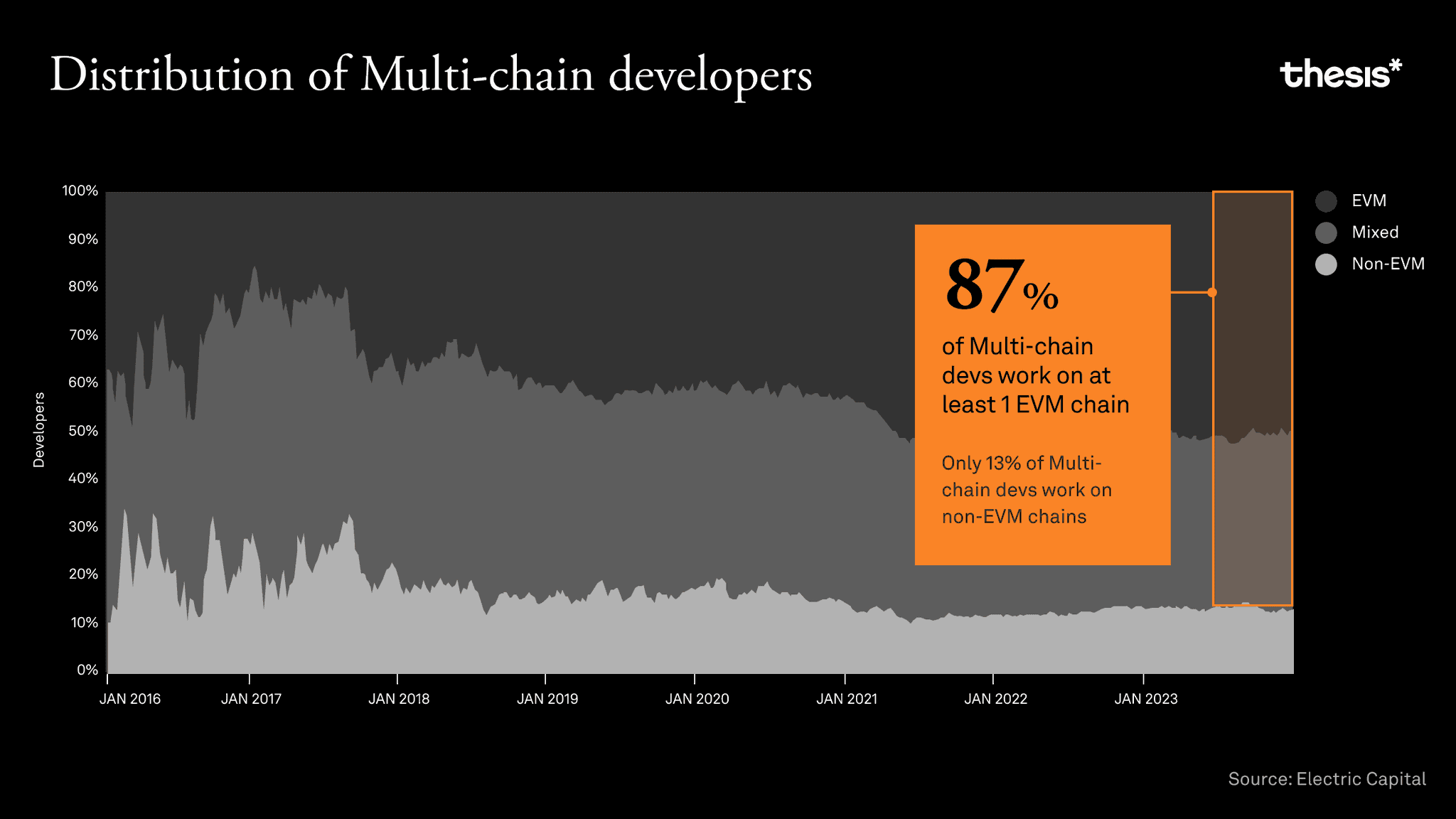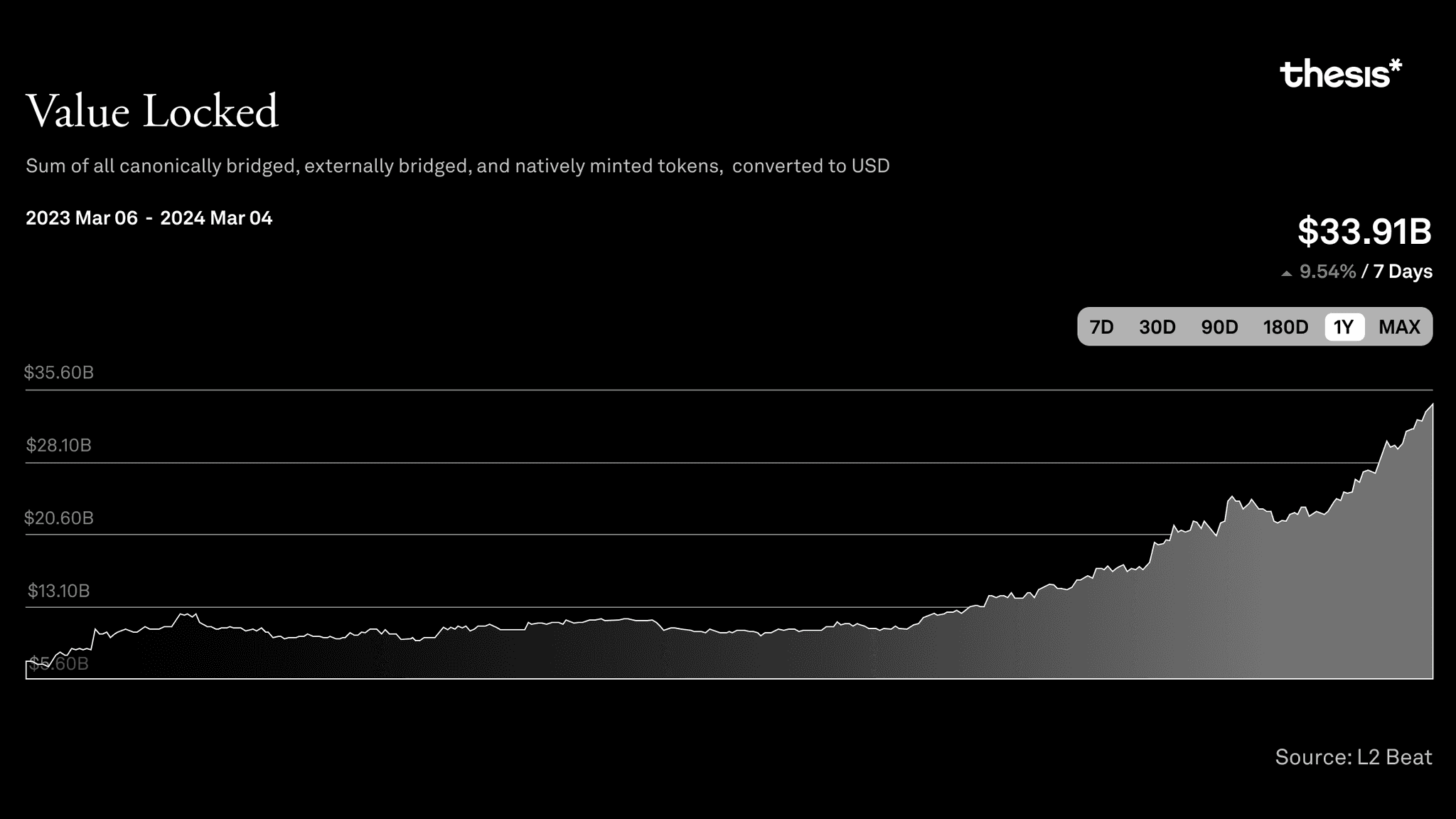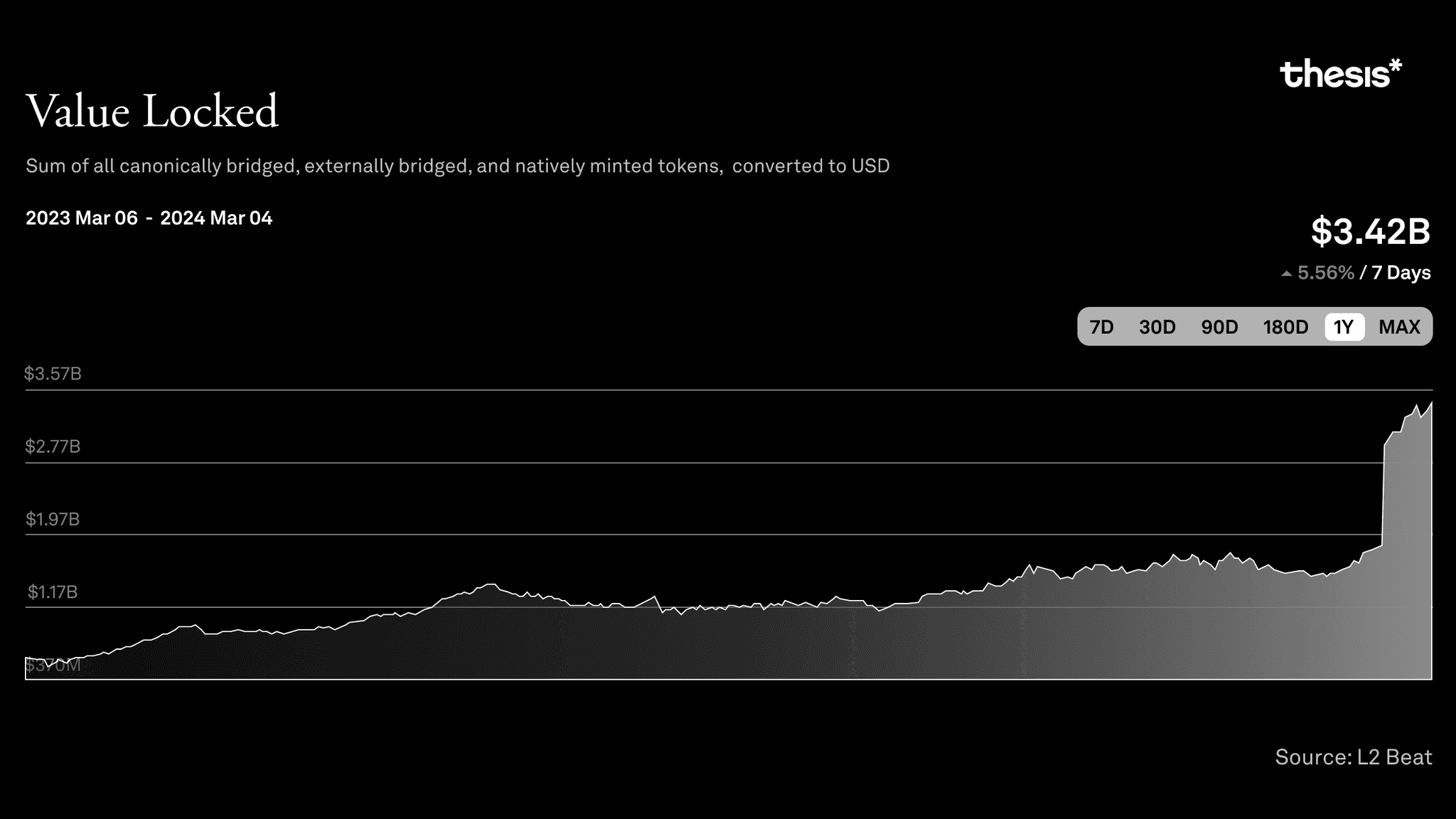As markets are booming and the bear heads towards hibernation, all eyes are on BTC as it leads the charge. Leading up to this growth phase, the ecosystem has seen the development of several Layer 2 (L2) networks, some of which are Ethereum Virtual Machine (EVM) compatible, to bridge the gap between the established network of EVM chains and the new Bitcoin L2 infrastructure.
But to effectively bridge any cross-chain gaps, Bitcoin L2 networks with EVM compatibility need to put Bitcoin first—meaning they must be a net benefit for BTC the asset, and the robustness of the Bitcoin network.
The notion of alignment with Bitcoin might seem abstract. To clarify, consider existing L2 solutions and their alignment—or lack thereof—with Bitcoin. For instance, tBTC technically positions Ethereum as a Bitcoin L2. Yet, it falls short of being a harmonious Bitcoin L2 since it does not enhance BTC's dominance as an asset. For Ethereum to be considered aligned, it would need to fortify the Bitcoin network, benefiting miners, node operators, and users alike—something that won’t happen for obvious reasons.
But Ethereum isn’t trying to achieve alignment with Bitcoin, and that’s fine. However, the newly proposed Bitcoin L2s can achieve Bitcoin alignment. This can be done by using BTC for economic security and as the chain’s gas asset. Regardless of the specific technical architecture and chain design, new EVM-compatible Bitcoin L2s must put Bitcoin first.
#Why EVM-Compatibility is Important
The connection between Bitcoin L2s and Ethereum might be puzzling to some, especially given some of the animosity between the two communities, but it is well reasoned. The EVM, which outlines the rules for how state transitions occur on the Ethereum network, e.g. how the smart contracts for Uniswap operate, has unsurprisingly become the most popular virtual machine for programmable blockchains. Other popular blockchains with their own virtual machine are Solana, Algorand, and Rootstock, which uses a forked version of the EVM.
The virtual machine of a blockchain is the powerhouse behind all of its functionality, defining and setting parameters for the following key functions:
- Smart Contract Execution
- Transaction Verification
- Consensus Mechanism
- Security
- Interoperability
Many of the proposed Bitcoin L2s use the EVM, and the reasoning is simple. With EVM support, a Bitcoin L2 can easily integrate popular smart contracts and developer toolkits and frameworks. For developers, EVM-based chains offer a playground rife with users ready to pour liquidity into new projects, fueling a flywheel of experimentation and innovation.
The thesis for building a Bitcoin L2 should be based on users and utility; creating a second layer that empowers people to use their BTC in ways they can’t right now. To do this, you need a strong network of developers and users, and that network exists within the EVM.
During 2023, software engineers overwhelmingly preferred EVM chains, which accounted for 87% of multichain development across networks including Starknet, Polygon, Optimism, and Arbitrum. A majority of incoming developers, some 16,700, flocked to Ethereum.
Source: Electric Capital
The liquidity sitting on EVM chains further cement its dominance in the market: the EVM L2 ecosystem currently boasts over $33 billion in total value locked (TVL), with leading networks like Arbitrum, OP Mainnet, and the newly launched Blast network capturing the lion's share of this capital.
Source: L2Beat
While the Ethereum L2 landscape also encompasses non-EVM zero-knowledge (ZK) chains, there is a relative dearth of adoption for those networks in comparison with the TVL of their EVM counterparts. Non-ZK EVMs, like Starknet which holds $1.24B in assets and uses the CairoVM, a Rust-based virtual machine for the Cairo programming language, fail to come close when comparing adoption levels via TVL and meaningful user metrics.
Source: L2Beat
An EVM-compatible BTC L2 offers native support for BTC, ideally via a trust-minimized bridge, with the advantages of EVM-functionalities. With more than 2.5M active monthly addresses for EVM chains outside of Ethereum, which has over 13M itself, the demand is palpable.
Because of this wide adoption, the EVM-based blockchains have access to deep liquidity and users who are willing to try new protocols and dApps, making the notion of EVM compatibility an increasingly attractive prospect for BTC L2s.
#Examples of EVM-Compatible Projects
#Rootstock
Rootstock is an EVM-compatible Bitcoin sidechain that uses merged mining for its security, meaning Bitcoin miners secure the network by opting to direct their computational power to Rootstock atop their existing mining efforts for RSK rewards. RBTC, a form of pegged BTC, facilitates transactions on the network. A network mechanism locks BTC on-chain and releases an equivalent amount of RBTC on Rootstock. It is controlled by a 10-party multi-signature entity, which must be trusted not to collude for the network to remain secure.
Rootstock brought to life the novel approach of merged mining that Satoshi proposed in an early forum discussion. Using the network’s existing mining infrastructure is a great way to add functionality to the Bitcoin network via improved chain functionality, but the discussion becomes nuanced as debates exist on whether it is long-term sustainable for Bitcoin, as miners may end up in a state where securing the sidechain becomes more profitable than Bitcoin itself. On the other side, as long as Rootstock is economically viable for miners, the model works. But if the network fails to keep miners engaged, meaning if RSK emission rewards lose value, its security model comes under threat.
Rootstock demonstrated the feasibility of EVM compatibility on a Bitcoin scaling network. Roughly 2,700 BTC is locked on Rootstock, and of that, $78.3m lies on Sovryn, a DeFi platform for BTC borrowing, lending, and margin trading built atop Rootstock.
Ultimately, with the apprehension towards merged mining chains, and the slow growth in use cases (Sovryn launching at the end of 2020 and still not seeing strong demand), Rootstock has failed to gain meaningful adoption and leaves the playing field open for newer EVM-equivalent Bitcoin L2s. The 10-party multisignature cabal's approach to bridging also presents a challenge to trust minimization.
For these newer BTC L2s to succeed, they’ll need to prioritize porting over the experiences familiar to users on EVM chains to offer a near-identical experience that users have today, with the only difference being BTC as the native asset.
#Botanix
Botanix is a new L2 concept that also recognizes the value of building on the EVM, intending to copy and paste EVM functionality on top of a Bitcoin-based network of validators. A round-robin proof-of-authority model on a single multi-signature contract provides the validation for Botanix.
In the long term, Botanix plans to decentralize its multi-sig run by the “Orchestrators”, analogous to network validators as they control the BTC bridge. Its testnet is currently live, and as mainnet launches, will be a viable proxy to understand how this “EVM-first” approach to BTC L2s is appreciated by the market.
#Bitcoin’s Security Budget
A Bitcoin-aligned, EVM-compatible L2 needs to make the L1 network stronger and benefit independent node operators, miners, and users. The best way to do that is to burn BTC. This approach may seem counterintuitive in traditional financial contexts, so to understand why this makes sense, we’ll need to review Bitcoin’s security model.
Bitcoin operates on a Proof of Work (PoW) standard, supported by miners who contribute their hash power to the network to finalize transaction blocks. There is also a built-in network mechanism, the halving, which cuts block rewards in half every four years. On April 19, 2024, the network’s next scheduled halving event will diminish the block rewards from 6.25 BTC to 3.125 BTC. Eventually, block rewards will be diminished to a negligible amount, and the network’s transaction fees will need to be profitable enough for the miners to continue their operations. Otherwise, Bitcoin risks losing the hash power that makes its security so strong.
Although L2s are primarily focused on scaling Bitcoin, they can also play a vital role in contributing to the longevity of Bitcoin’s security budget with a BTC burn mechanism. The burn is intended to increase the price of BTC, incentivizing miners so that the cumulative value of fees collected from transactions supports their operations. Any EVM-compatible Bitcoin-aligned L2 must account for the future of a zero block reward future, and contribute to fixing the problem.
If EVM-compatible BTC L2s are going to burn BTC, it makes sense they would use it for gas and network fees. Thus, a fully Bitcoin-aligned L2 that is EVM-compatible would way broaden the span of utility for BTC:
- Security
- Gas
- Use-cases in dApps
#Sustained Development and Security
Another way to support Bitcoin as an EVM-compatible L2 is to help support Bitcoin core development, which will help to continue ushering in innovations for Bitcoin while maintaining its robustness. The expansion of the Lightning Network, Bitcoin’s SegWit and Taproot upgrades, and potential future upgrades would not be possible without the support of core Bitcoin developers. Bitcoin is fundamental to these future L2s’ existence—funneling support to such engineering efforts helps ensure that development continues unfettered so Bitcoin remains stable, secure, and able to evolve.
And by the same principles upon which Bitcoin stands, EVM-compatible BTC L2s must be as decentralized as possible, so that users can easily access value as it freely transfers to and from the network. This means fast access to liquidity without black boxes, and wide accessibility to anyone with BTC through a trust-minimized bridge.
Following such a framework, it becomes more rational that EVM-compatible BTC-aligned L2s will serve a meaningful role in tackling the looming incentive-related challenges of the ecosystem. While the implementation of a Bitcoin-aligned L2 may look different, the core properties outlined above should be treated as non-negotiable.




